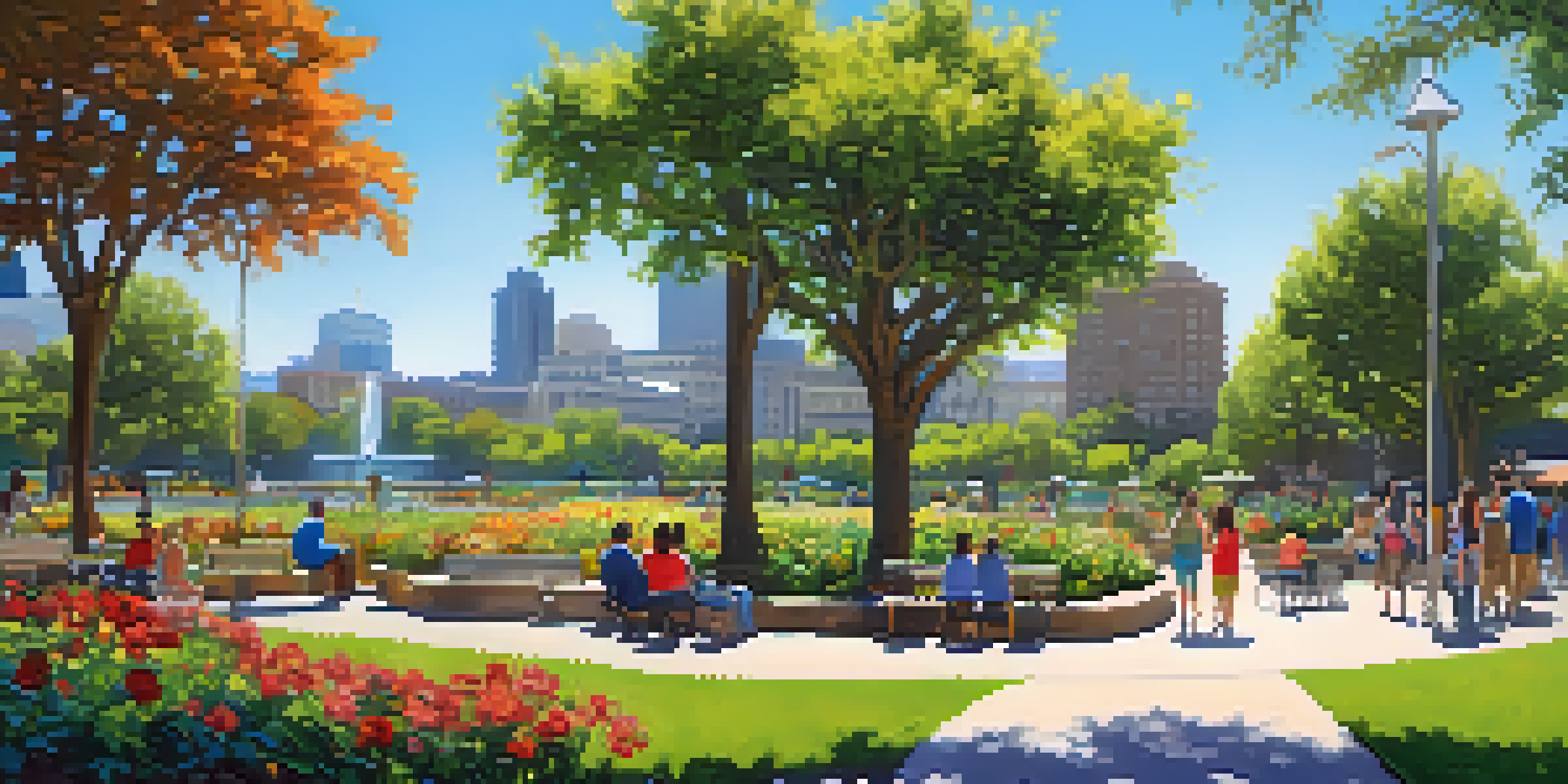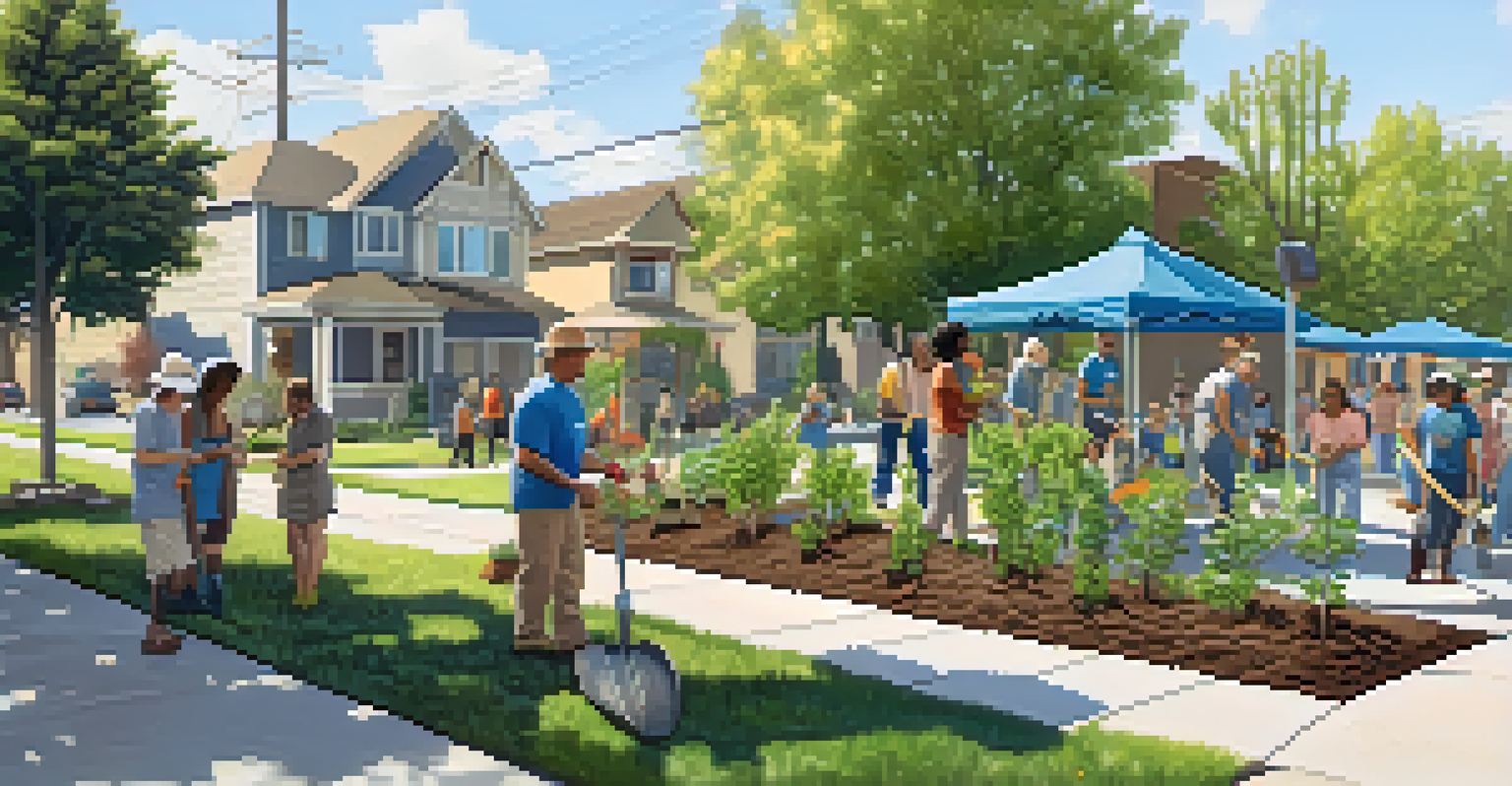Understanding the Urban Heat Island Effect in Sacramento City

What is the Urban Heat Island Effect?
The Urban Heat Island (UHI) effect refers to the phenomenon where urban areas experience significantly warmer temperatures than their rural surroundings. This temperature difference is primarily due to human activities and the materials used in urban construction, such as asphalt and concrete, which absorb and retain heat. Think of it like a cozy blanket that cities wrap around themselves, trapping heat that would otherwise dissipate into the atmosphere.
Cities should be designed for people, not cars. Green spaces are crucial for urban living, especially as we face challenges like the Urban Heat Island effect.
In cities like Sacramento, UHI can lead to higher energy demands for air conditioning, increased air pollution, and heat-related health risks. On a hot summer day, it’s not uncommon for urban temperatures to soar several degrees higher than in nearby rural areas. This temperature disparity can create uncomfortable living conditions, particularly for vulnerable populations such as the elderly or those with preexisting health conditions.
Understanding UHI is crucial for developing strategies to mitigate its effects. By recognizing how urban landscapes contribute to elevated temperatures, city planners and residents can work together to implement solutions that promote cooler, healthier environments.
Factors Contributing to UHI in Sacramento
Several factors contribute to the UHI effect in Sacramento, including urban density, land use, and vegetation cover. As the city has grown, more natural landscapes have been replaced with buildings, roads, and parking lots, all of which absorb and retain heat. This change in land use disrupts the natural cooling processes that occur in areas with ample greenery.

Another critical factor is the lack of vegetation in urban areas. Trees and plants play a vital role in cooling the environment through a process called evapotranspiration, where water evaporates from soil and plant surfaces, helping to lower surrounding temperatures. In Sacramento, neighborhoods with fewer trees often feel significantly hotter compared to those with lush parks and shaded streets.
Urban Heat Islands Raise Temperatures
The Urban Heat Island effect causes cities to be significantly warmer than rural areas due to human activities and construction materials.
Additionally, the urban heat island effect can be exacerbated by human activities, such as transportation and industrial processes. As more vehicles crowd the roads and factories operate, they emit heat and pollutants that contribute to the overall warming of the city. This combination of factors makes it essential to address UHI proactively to protect the health and well-being of Sacramento’s residents.
Environmental and Health Impacts of UHI
The environmental impacts of the urban heat island effect are profound. As temperatures rise, the demand for energy increases, leading to higher greenhouse gas emissions from power plants. This cycle not only contributes to climate change but also harms local ecosystems, as many plants and animals struggle to adapt to the rapidly changing conditions in their habitats.
The future will be about resilience. We need to combine the best of urban design with ecological principles to combat the growing challenges of climate change.
Health-wise, the UHI effect poses serious risks, particularly during heatwaves. Higher temperatures can exacerbate existing health issues, leading to increased rates of heat-related illnesses such as heat exhaustion and heat stroke. Vulnerable populations, including the elderly, children, and those with pre-existing health conditions, are especially at risk, highlighting the need for community awareness and preparedness.
Moreover, the UHI effect can worsen air quality, as higher temperatures contribute to the formation of ground-level ozone, a harmful pollutant. Poor air quality can lead to respiratory issues and other health problems, further burdening the healthcare system. Understanding these impacts is key for residents and policymakers to prioritize health and sustainability.
Mitigation Strategies for UHI in Sacramento
Mitigating the urban heat island effect requires a multi-faceted approach, starting with increasing green spaces in urban areas. Planting trees, creating parks, and incorporating green roofs and walls can significantly reduce temperatures by providing shade and enhancing evapotranspiration. For example, community gardens not only beautify neighborhoods but also serve as vital cooling zones during hot days.
Another effective strategy is the use of reflective materials in urban planning. By selecting lighter-colored surfaces for roads and roofs, cities can minimize heat absorption and help lower overall temperatures. This is akin to wearing light clothing in summer; it reflects sunlight and keeps you cooler, making a noticeable difference in comfort levels.
Green Spaces Mitigate Heat Effects
Increasing vegetation and green spaces in urban areas can help lower temperatures and create a healthier living environment.
Additionally, promoting public awareness about the UHI effect can empower residents to take action in their own neighborhoods. Simple steps, such as planting trees, utilizing shade structures, or advocating for more green spaces, can collectively make a significant impact. Engaging the community in these initiatives fosters a sense of ownership and responsibility towards creating a cooler, healthier Sacramento.
Role of Local Government in UHI Management
Local government plays a pivotal role in managing the urban heat island effect through policies and initiatives aimed at enhancing urban resilience. By implementing zoning regulations that prioritize green spaces and sustainable architecture, officials can shape the city’s landscape in ways that mitigate heat absorption. This proactive approach can lead to long-term benefits for both residents and the environment.
Moreover, Sacramento's government can invest in infrastructure improvements that support UHI mitigation, such as expanding public transportation options to reduce vehicular emissions. Encouraging the use of bicycles and public transit not only lessens traffic congestion but also decreases overall heat generation from vehicles. This integrated strategy aligns urban planning with environmental sustainability.
Engaging with community organizations and stakeholders is also crucial. By collaborating with local groups, the government can ensure that initiatives are tailored to the specific needs of different neighborhoods, fostering a collective effort to tackle UHI. In doing so, Sacramento can become a model for other cities facing similar challenges.
Community Involvement in UHI Solutions
Community involvement is essential for addressing the urban heat island effect effectively. Residents can take proactive steps by participating in local tree-planting events or advocating for more green spaces in their neighborhoods. By coming together, communities can create a cooler environment that benefits everyone, demonstrating the power of collective action.
Additionally, educational programs can help raise awareness about the UHI effect and its impacts. Schools and local organizations can host workshops that inform residents about simple strategies to reduce heat, such as using reflective materials on homes or creating shaded areas in yards. Knowledge is empowering, and the more people understand the issue, the more likely they are to contribute to solutions.
Community Engagement is Key
Active participation from residents in initiatives like tree planting and local education can effectively address the urban heat island effect.
Furthermore, community engagement fosters a sense of pride and ownership over local environments. When residents feel invested in their neighborhoods, they are more likely to support initiatives that promote sustainability and resilience. This grassroots approach not only leads to tangible improvements but also strengthens community bonds, making Sacramento a healthier place to live.
Future Outlook for Sacramento and UHI
Looking ahead, Sacramento faces both challenges and opportunities in combating the urban heat island effect. As climate change continues to influence weather patterns, the city will likely experience more frequent and intense heatwaves. However, this also presents a chance for innovation and collaboration among residents, businesses, and government agencies to create effective solutions.
Investments in sustainable infrastructure, such as green roofs, permeable pavements, and urban forests, can significantly mitigate UHI effects while enhancing overall livability. By prioritizing these initiatives, Sacramento can set an example for other cities grappling with similar issues, showing that proactive measures can yield positive results.

Ultimately, the future outlook for Sacramento hinges on collective action and commitment to sustainability. As the community works together to address the urban heat island effect, it can foster a healthier, cooler, and more resilient city for generations to come.